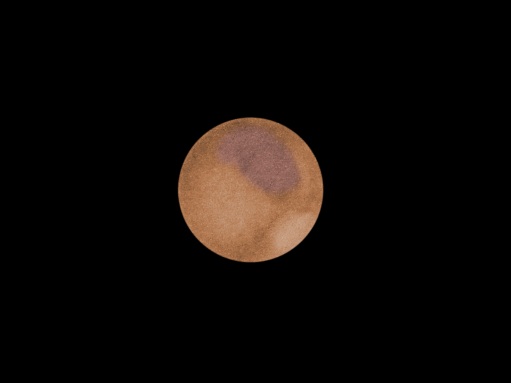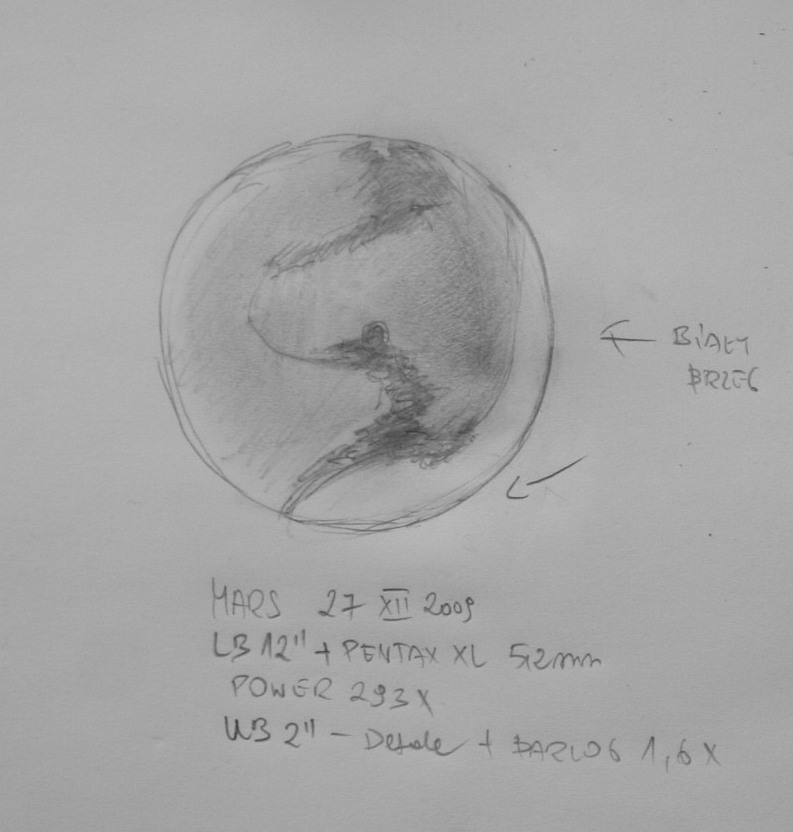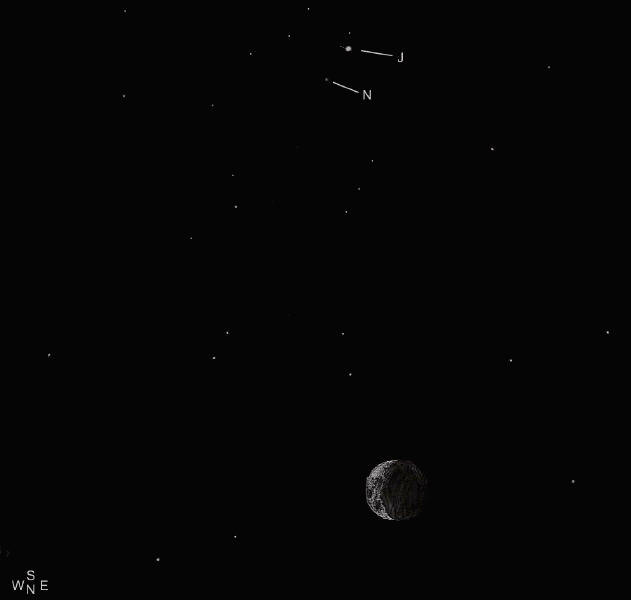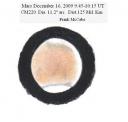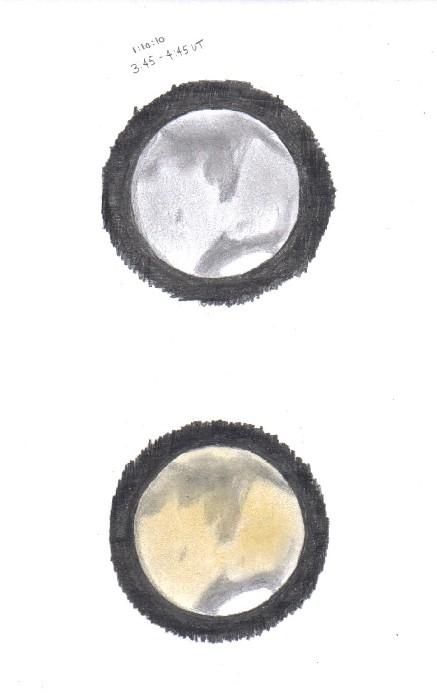
Mars – CM 262 – January 10, 2010
Sketch and Details by Frank McCabe
Mars: January 10, 2010
It was a cold, mostly clear, moonless, night with Mars high in the southeastern sky. Mars was very bright at visual magnitude -1, 98% illuminated and 65.1 million miles from us. The visual diameter of the planet was 13.4″of arc and the central meridian was at 292°.
The first sketch, a graphite drawing, was made at the eyepiece over a one hour interval. When I returned indoors I redrew the sketch in color pencils. When the second colorized sketch matched the eyepiece sketch I stopped and considered it complete.
The seeing was about average (Antoniadi III). Mars is inverted in the sketch and matches the Newtonian view with the north polar cap down and the preceding side to the left.
From top (south) to bottom (north) along the meridian I was able to see with certainty Hellas, Iapygia Viridis, Syrtis Major, Casius and much of Utopia. Also visible in the southern hemisphere were Mare Tyrrhenum, Mare Sepentis, and part of Sinus Sabaeus. In the northern hemisphere I could see intermittently Nodus Alcyonius and Boreo Syrtis.
Sketching:
White sketching paper 8″ x 11″; HB graphite pencil, blending stump for blending orange, brown and yellow Crayola pencil shavings. No adjustments were needed after scanning.
Date 1/10/2010 – Time 3:45-4:45 UT
Telescope: 13.1 inch f/6 Dobsonian and 6mm eyepiece 333x
An UltraBlock Narrowband filter was helpful with some of the fainter features.
Temperature: -17°C (1°F)
clear, calm
Transparency 4/5
Seeing: Antoniadi III
Frank McCabe








